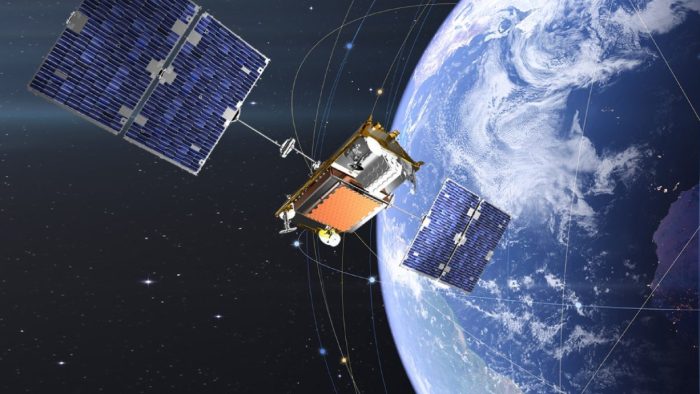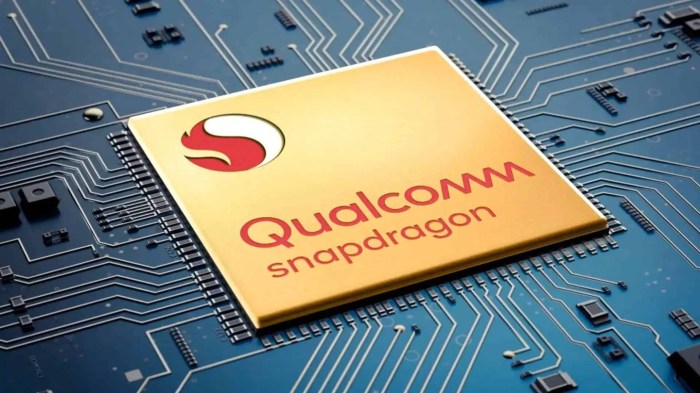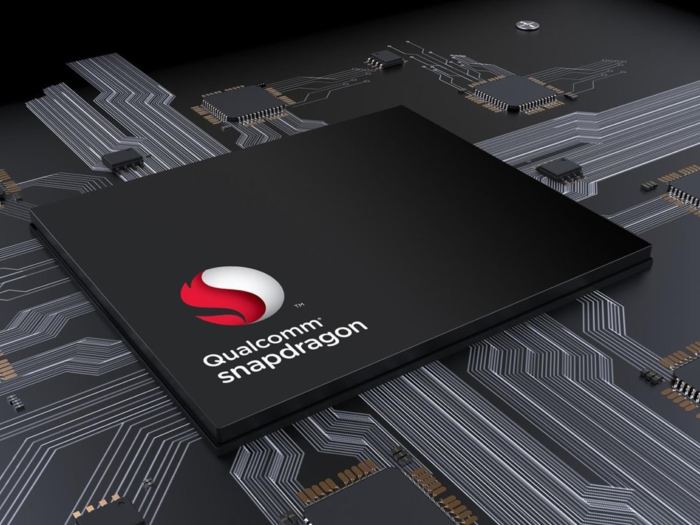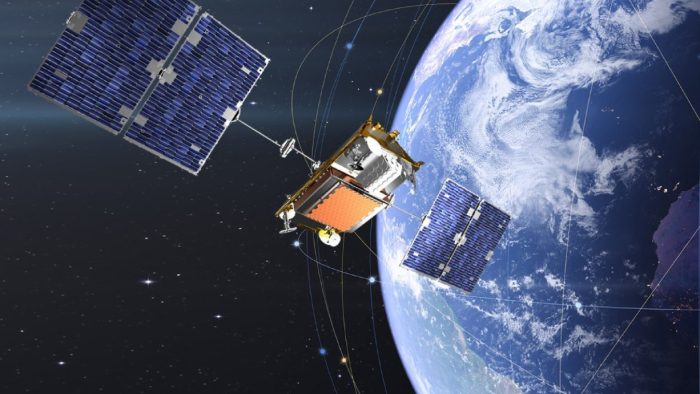
Qualcomm Unveils Snapdragon Satellite: A New Era of Connectivity
Qualcomm unveils Snapdragon Satellite, a game-changer in the mobile industry, promising a future where connectivity extends beyond cellular networks. This revolutionary technology allows devices to communicate directly with satellites, opening doors to unprecedented possibilities for individuals and businesses alike.
Imagine a world where you can send messages, make calls, and access the internet even in remote areas with limited or no cellular coverage. Snapdragon Satellite empowers this vision, leveraging the power of satellite communication to bridge the digital divide and connect the unconnected.
This groundbreaking technology promises to transform various industries, from consumer electronics and emergency services to IoT and transportation.
Qualcomm’s Snapdragon Satellite Announcement
Qualcomm’s announcement of Snapdragon Satellite, a technology that enables two-way satellite communication on mobile devices, is a significant milestone in the mobile industry. This groundbreaking technology has the potential to revolutionize connectivity and communication, particularly in areas where traditional cellular networks are unavailable or unreliable.
Snapdragon Satellite Technology
Snapdragon Satellite leverages the Iridium satellite constellation, a global network of 66 low Earth orbit (LEO) satellites. This network provides continuous coverage, enabling communication from virtually anywhere on Earth. Qualcomm’s technology integrates satellite communication capabilities directly into the Snapdragon chipsets, allowing smartphone manufacturers to seamlessly incorporate this functionality into their devices.
Impact on the Mobile Industry
Snapdragon Satellite’s impact on the mobile industry is expected to be substantial.
- Enhanced Connectivity:This technology will significantly enhance connectivity in remote areas, disaster zones, and maritime environments, where traditional cellular networks are often unavailable. This improved connectivity will enable people to stay connected, access essential services, and receive vital information during emergencies.
- New Applications and Services:Snapdragon Satellite will open up new possibilities for applications and services that rely on reliable and ubiquitous connectivity. Examples include real-time tracking of assets, remote monitoring of critical infrastructure, and emergency communication for outdoor enthusiasts and travelers.
- Increased Device Functionality:By integrating satellite communication directly into chipsets, Snapdragon Satellite enables smartphone manufacturers to offer a wider range of functionalities and services to their customers. This will enhance the user experience and create new revenue opportunities for device makers.
Capabilities and Limitations
Snapdragon Satellite offers several capabilities, but it also has certain limitations.
- Two-way Communication:Snapdragon Satellite enables both sending and receiving messages, allowing for real-time communication regardless of location.
- Global Coverage:The Iridium constellation provides global coverage, ensuring that users can communicate from virtually anywhere on Earth.
- Low Latency:The technology utilizes LEO satellites, which are closer to Earth than traditional geostationary satellites, resulting in lower latency and faster communication speeds.
- Data Rates:While Snapdragon Satellite offers reliable communication, the data rates are currently limited compared to cellular networks. This limitation is due to the bandwidth constraints of satellite communication and the size of the satellite antennas on mobile devices.
- Cost:The cost of using satellite communication is generally higher than traditional cellular networks. However, as the technology matures and adoption increases, prices are expected to decline.
Snapdragon Satellite Functionality and Applications: Qualcomm Unveils Snapdragon Satellite

Snapdragon Satellite is a groundbreaking technology that leverages the power of satellite communication to provide ubiquitous connectivity for mobile devices. This innovative solution enables seamless communication even in areas with limited or no cellular coverage, opening up a world of possibilities across various industries.
Consumer Electronics
Snapdragon Satellite empowers consumers with a new level of connectivity, offering reliable communication even in remote locations or during emergencies. Imagine staying connected while hiking in the wilderness, navigating unfamiliar terrain, or experiencing an unexpected power outage.
“With Snapdragon Satellite, you can send text messages, share your location, and even make emergency calls even without cellular service.”
This technology can revolutionize travel, outdoor adventures, and everyday communication, providing peace of mind and enhanced safety.
Emergency Services
Snapdragon Satellite plays a crucial role in enhancing emergency response capabilities. By providing reliable communication channels in remote or disaster-stricken areas, it empowers first responders to coordinate efforts, share critical information, and provide timely assistance.
“In situations where traditional communication networks are disrupted, Snapdragon Satellite can be a lifeline for emergency services.”
Qualcomm’s Snapdragon Satellite is a game-changer for connectivity, promising reliable communication even in remote areas. While I’m excited about the possibilities of satellite connectivity, I can’t help but think about the perfect gaming setup to take advantage of it.
If I were to game on the go, I’d definitely be using a Razer Huntsman V3 Pro Tenkeyless for its compact size and top-notch performance. It’s clear that Qualcomm’s Snapdragon Satellite has the potential to revolutionize how we connect and interact with the world, and I can’t wait to see what the future holds.
This technology can be instrumental in saving lives and mitigating the impact of natural disasters or other emergencies.
Qualcomm’s Snapdragon Satellite is a game-changer for connectivity, promising to revolutionize communication in remote areas. While I’m eagerly awaiting the launch of this innovative technology, I’m also sad to see the OpenTable London Restaurant Festival come to an end. It’s been a delicious month of culinary exploration, and I can’t wait to see what the future holds for both Snapdragon Satellite and the London dining scene.
Internet of Things (IoT)
The Internet of Things is rapidly expanding, with billions of devices connected to the internet. Snapdragon Satellite provides a reliable and secure communication infrastructure for IoT devices, enabling data collection and remote monitoring even in remote or challenging environments.
“Snapdragon Satellite can enable remote monitoring of infrastructure, environmental sensors, and other IoT devices, regardless of location.”
This technology can revolutionize industries such as agriculture, energy, and environmental monitoring, enabling real-time data collection and improved decision-making.
Remote Sensing, Qualcomm unveils snapdragon satellite
Remote sensing applications rely on data collected from satellites, drones, and other platforms. Snapdragon Satellite enhances remote sensing capabilities by providing a secure and reliable communication channel for data transmission, enabling real-time monitoring and analysis of various environmental and geographic parameters.
“Snapdragon Satellite can facilitate the transmission of high-resolution imagery and sensor data, enabling more accurate and timely insights for environmental monitoring, disaster management, and resource management.”
Qualcomm’s Snapdragon Satellite is a game-changer for mobile connectivity, promising reliable communication even in remote areas. While I’m excited about the possibilities for emergency messaging and disaster relief, I’m also eagerly awaiting the day I can use it to check the latest deals on Hunkemoller UK’s new and upcoming offers while hiking in the wilderness! It’s fascinating to see how technology like Snapdragon Satellite is blurring the lines between our everyday lives and the great outdoors.
This technology can contribute to improved environmental monitoring, resource management, and disaster response efforts.
Transportation
The transportation industry can leverage Snapdragon Satellite for enhanced safety, efficiency, and communication. By providing reliable communication channels, this technology can enable real-time vehicle tracking, emergency assistance, and improved fleet management.
“Snapdragon Satellite can enable seamless communication between vehicles, dispatchers, and emergency services, enhancing safety and efficiency in transportation.”
This technology can be particularly valuable for autonomous vehicles, maritime transportation, and remote areas with limited infrastructure.
Potential Benefits and Challenges
| Industry | Benefits | Challenges |
|---|---|---|
| Consumer Electronics | Enhanced connectivity, improved safety, peace of mind, and new possibilities for communication and entertainment. | Cost of implementation, limited data rates, potential for interference, and regulatory challenges. |
| Emergency Services | Improved communication capabilities in remote or disaster-stricken areas, enhanced coordination and response efforts, and potentially saving lives. | Cost of implementation, limited data rates, potential for interference, and the need for specialized training and equipment. |
| IoT (Internet of Things) | Reliable and secure communication for IoT devices, enabling remote monitoring and data collection, and improving efficiency and decision-making. | Cost of implementation, limited data rates, potential for interference, and the need for robust security measures. |
| Remote Sensing | Improved data transmission capabilities, enabling real-time monitoring and analysis, and contributing to environmental monitoring, disaster management, and resource management. | Cost of implementation, limited data rates, potential for interference, and the need for specialized data processing and analysis capabilities. |
| Transportation | Enhanced safety and efficiency, improved communication between vehicles and dispatchers, and enabling real-time tracking and fleet management. | Cost of implementation, limited data rates, potential for interference, and the need for robust security measures to protect sensitive transportation data. |
Comparison with Existing Satellite Communication Technologies
Snapdragon Satellite joins a growing list of satellite communication technologies vying for a place in the connected world. It faces competition from established players like Iridium and the rapidly expanding Starlink network. Understanding the strengths and weaknesses of each technology is crucial for evaluating Snapdragon Satellite’s potential impact.
Coverage
The extent of coverage offered by each technology significantly impacts its usefulness.
- Iridium: Iridium boasts a global network with near-polar orbiting satellites, providing consistent coverage even in remote areas. This makes it a reliable option for emergency communication and disaster relief.
- Starlink: Starlink is rapidly expanding its constellation of low Earth orbit (LEO) satellites, aiming for global coverage. Its denser network and lower latency make it well-suited for high-bandwidth applications like internet access.
- Snapdragon Satellite: Qualcomm has partnered with Globalstar for Snapdragon Satellite’s initial launch, utilizing their existing constellation. This provides global coverage, although the exact density and performance may differ from Iridium and Starlink.
Latency
Latency, the time it takes for a signal to travel from the device to the satellite and back, is critical for real-time applications.
- Iridium: With its higher altitude satellites, Iridium experiences higher latency compared to LEO systems. This can be noticeable in applications requiring low latency, like online gaming.
- Starlink: Starlink’s LEO satellites offer significantly lower latency than Iridium, making it suitable for applications demanding real-time responsiveness, such as video calls and online gaming.
- Snapdragon Satellite: Snapdragon Satellite’s latency will likely be similar to Iridium due to its reliance on Globalstar’s constellation. This means it may not be ideal for applications demanding the lowest possible latency.
Cost
The cost of accessing satellite communication can vary significantly, impacting user adoption.
- Iridium: Iridium offers a range of services with varying costs, from basic emergency messaging to high-bandwidth data plans. Its pricing is generally considered higher than Starlink, especially for high-data usage.
- Starlink: Starlink offers a subscription-based model, with pricing dependent on data usage. Its relatively low cost has contributed to its rapid adoption for internet access, particularly in areas with limited terrestrial options.
- Snapdragon Satellite: Qualcomm has not yet disclosed pricing details for Snapdragon Satellite. However, given its focus on mainstream adoption, it is likely to target a competitive price point. It may offer a tiered pricing model similar to Iridium, with different data plans and features.
Data Rates
The speed at which data can be transmitted over a satellite network is crucial for various applications.
- Iridium: Iridium’s data rates are generally lower than Starlink, suitable for basic messaging and limited data transfer. Its focus is on reliable communication rather than high-speed data transmission.
- Starlink: Starlink offers significantly higher data rates than Iridium, enabling high-bandwidth applications like streaming video and online gaming. Its LEO constellation allows for greater bandwidth capacity compared to higher-altitude systems.
- Snapdragon Satellite: Qualcomm has not provided specific data rate details for Snapdragon Satellite. Its initial partnership with Globalstar suggests data rates may be comparable to Iridium, focusing on reliable communication rather than high-speed data transfer.
Power Consumption
Power consumption is a critical factor for mobile devices relying on satellite communication.
- Iridium: Iridium’s higher power requirements can impact battery life on mobile devices. This is particularly relevant for applications requiring extended use, such as emergency communication.
- Starlink: Starlink’s LEO satellites generally require less power for communication, minimizing impact on device battery life. This is advantageous for applications where extended usage is expected.
- Snapdragon Satellite: Qualcomm has not provided specific power consumption details for Snapdragon Satellite. However, its focus on mainstream adoption suggests efforts to minimize power consumption to extend device battery life.
Market Impact and Future Outlook

Snapdragon Satellite has the potential to revolutionize the mobile device industry by providing seamless connectivity in remote areas and during emergencies. This technology will significantly impact the mobile device market, driving innovation and expanding the reach of communication services.
Market Impact
The introduction of Snapdragon Satellite is expected to have a significant impact on the mobile device industry. This impact can be observed in various aspects:
- Increased Demand for Satellite-Enabled Devices:As the demand for reliable connectivity in remote areas grows, the adoption of Snapdragon Satellite-enabled devices will likely increase. This will drive manufacturers to incorporate Snapdragon Satellite into their devices, leading to a wider availability of satellite-enabled smartphones, tablets, and other mobile devices.
- Expansion of Mobile Network Coverage:Snapdragon Satellite will extend mobile network coverage to areas previously inaccessible, such as remote regions, disaster zones, and areas with limited cellular infrastructure. This expansion will create new opportunities for mobile operators and service providers to reach a wider audience.
- New Business Models and Services:Snapdragon Satellite will enable the development of new business models and services, such as satellite-based messaging, location tracking, and emergency communication. This will foster innovation in the mobile industry and create new revenue streams for businesses.
Adoption Rate and Growth Potential
The adoption rate of Snapdragon Satellite will depend on various factors, including the cost of the technology, the availability of satellite networks, and the demand for satellite-enabled services. However, considering the growing need for reliable connectivity and the potential benefits offered by Snapdragon Satellite, the adoption rate is expected to be significant.
- Early Adoption by Specific User Groups:Initially, the adoption of Snapdragon Satellite will be driven by specific user groups, such as outdoor enthusiasts, travelers, and emergency responders. These groups require reliable communication in remote areas, making Snapdragon Satellite a valuable solution.
- Gradual Expansion to Mainstream Users:As the technology matures and becomes more affordable, it is expected to gradually expand to mainstream users. The integration of Snapdragon Satellite into mainstream smartphones and tablets will make it accessible to a broader audience.
- Growth Driven by User Demand and Network Expansion:The growth potential of Snapdragon Satellite will be driven by user demand for reliable connectivity and the expansion of satellite networks. As more satellite networks become available and the technology becomes more affordable, the adoption rate is expected to accelerate.
Future Development and Evolution
Snapdragon Satellite is a rapidly evolving technology with significant potential for future development and evolution. Here are some key areas where we can expect advancements:
- Improved Bandwidth and Data Rates:Future advancements in satellite technology will focus on increasing bandwidth and data rates, enabling faster and more efficient communication. This will allow for more data-intensive applications and services.
- Enhanced Network Coverage and Availability:As more satellite constellations are launched, the network coverage and availability of Snapdragon Satellite will improve, providing wider and more reliable connectivity.
- Integration with Other Technologies:Snapdragon Satellite will likely be integrated with other emerging technologies, such as 5G and the Internet of Things (IoT), to create a more comprehensive and interconnected communication ecosystem.
Challenges and Considerations

While Snapdragon Satellite promises to revolutionize connectivity, several challenges and considerations need to be addressed for its successful implementation and widespread adoption. These challenges range from regulatory hurdles and infrastructure development to privacy and security concerns and the cost of implementation.
Regulatory Hurdles
The deployment and operation of satellite communication networks are subject to strict regulations by national and international authorities. Qualcomm and its partners must navigate these regulations, ensuring compliance with spectrum allocation, licensing requirements, and other legal frameworks.
- Spectrum Allocation:Satellite communication requires access to specific frequency bands, which are often limited and subject to allocation by regulatory bodies. Qualcomm needs to secure these bands and ensure they are compatible with Snapdragon Satellite’s technology.
- Licensing Requirements:Operating a satellite communication network requires licenses and permits from relevant authorities. Qualcomm must obtain these licenses and comply with ongoing regulatory requirements.
- International Agreements:Satellite communication often involves cross-border transmissions, requiring adherence to international agreements and treaties governing spectrum usage and data transmission.
Infrastructure Development
The success of Snapdragon Satellite relies on the availability and expansion of supporting infrastructure, including ground stations, satellites, and network infrastructure.
- Ground Station Network:A robust network of ground stations is crucial for receiving and transmitting data to and from satellites. Qualcomm needs to collaborate with ground station operators to ensure widespread coverage and reliable connectivity.
- Satellite Constellation:A sufficient number of satellites in orbit is essential for providing global coverage and low latency communication. Qualcomm needs to partner with satellite operators or develop its own constellation to meet these requirements.
- Network Infrastructure:Snapdragon Satellite needs to seamlessly integrate with existing cellular and internet networks to provide a seamless user experience. This requires interoperability and compatibility with existing infrastructure.
Privacy and Security Concerns
Satellite communication raises concerns about privacy and security, particularly in relation to data interception and potential misuse.
- Data Interception:Satellite communication signals can be intercepted by unauthorized parties, potentially compromising user privacy and data security. Robust encryption and security measures are essential to mitigate these risks.
- Data Security:The transmission of sensitive data over satellite networks requires robust security protocols to prevent unauthorized access and data breaches. Qualcomm needs to implement strong authentication, encryption, and data integrity mechanisms.
- Government Surveillance:Governments may have access to satellite communication data, raising concerns about privacy and freedom of expression. Clear regulations and safeguards are necessary to protect user privacy and ensure transparency.
Cost of Implementation
The development, deployment, and operation of a satellite communication network are costly endeavors. Qualcomm and its partners need to consider the cost implications and find ways to make Snapdragon Satellite accessible to a broad range of users.
- Development Costs:Developing the technology and hardware for Snapdragon Satellite requires significant upfront investment. Qualcomm needs to manage these costs effectively to ensure the project’s viability.
- Deployment Costs:Launching and operating satellites, building ground stations, and maintaining network infrastructure incur substantial costs. Qualcomm needs to explore cost-effective solutions and partnerships to minimize these expenses.
- User Costs:The cost of using Snapdragon Satellite services will impact its adoption. Qualcomm needs to find a balance between providing affordable services and ensuring the sustainability of the business model.


